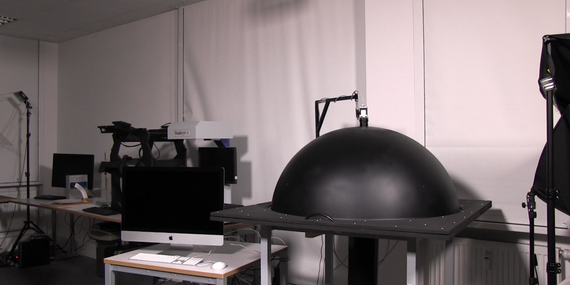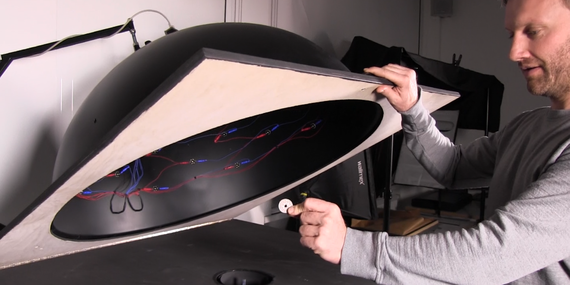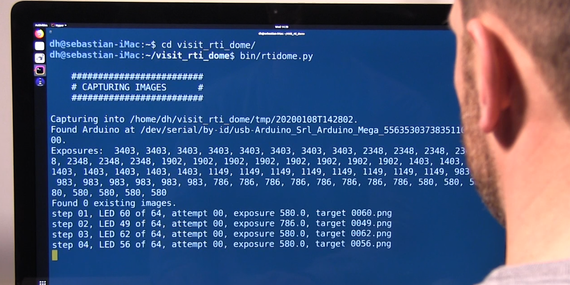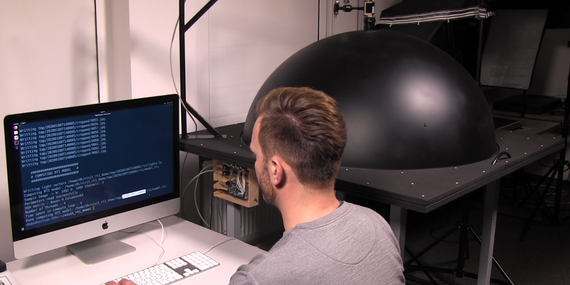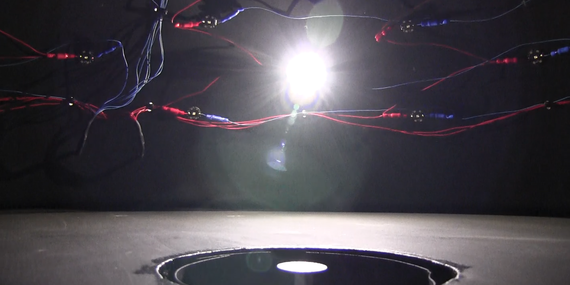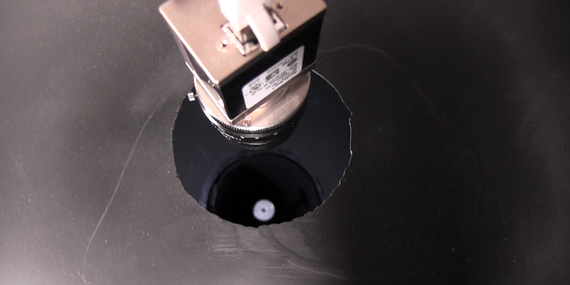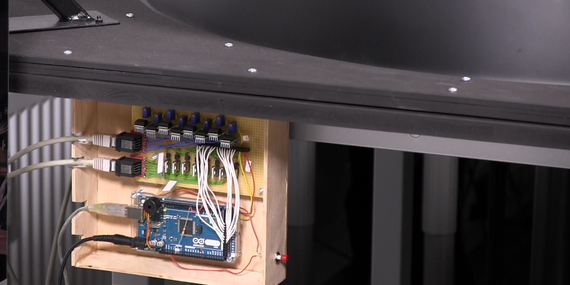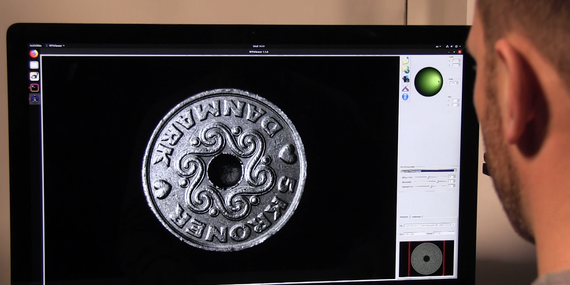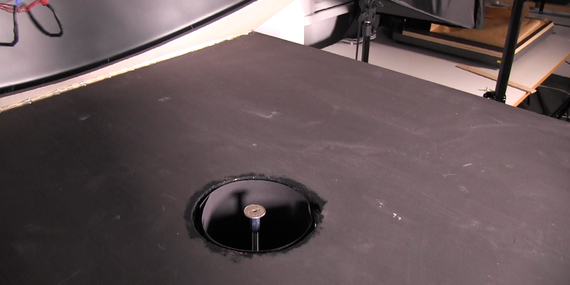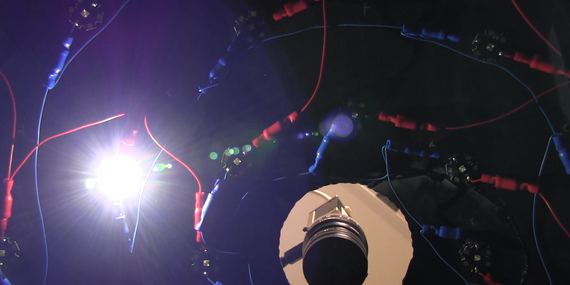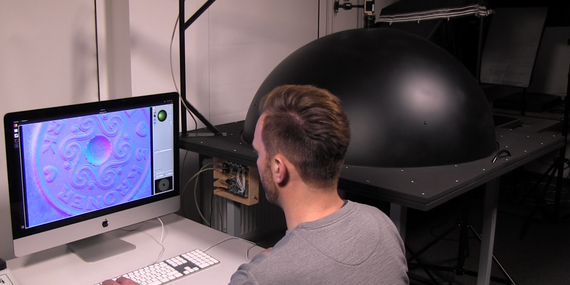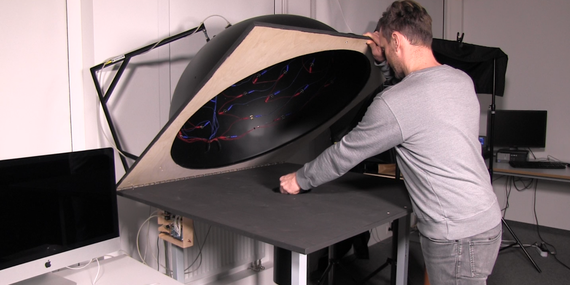The RTI Dome
in the laboratory for cultural heritage digitization
In the ViSIT Project, the RTI method was applied under special "laboratory conditions". In the laboratory for cultural heritage digitization at the chair of Digital Humanities (Prof. Dr. Malte Rehbein) at the University of Passau, an RTI Dome was built and corresponding Software was developed for its operation (MSc Sebastian Gassner).
The construction was based on plans and instructions that can be obtained as Open Source, which were modified with regard to the requirements of the project. The software developed within the scope of ViSIT can be accessed via the section Digital Tools.
The RTI Dome at the chair for DH is suitable for objects up to 30 cm in length and was used in a ViSIT, in particular, the RTI-digitisation of historical coins from the collections of the Oberhausmuseum Passau.
Construction and function of the RTI Dome
The Hardware of the RTI dome consists of the following essential components:
- A rear hinged dome, with a central recess for the camera lens
- 64 connected LEDs within the dome
- A device mounted centrally at the bottom of the dome to support the object to be captured (demo above: a modern Danish coin)
- A camera (here: an industrial camera of the company Basler), with interchangeable lenses for different focal lengths
- A fixed gallows that holds the camera fixed at the top of the dome recess
- A Controller (here: an Arduino) that connects the Dome to the computer and allows control via scripts
The RTI Dome Software (written in the scripting language Python) includes three complementary programs that run in a row:
- Script (1) simultaneously triggers the LEDs connected in series one after the other and generates a photographic capture per LED.
- Script (2) randomly selects five shots from the generated 64, identifies the center of the captured object and then (with the addition of a small margin) circumcises all shots according to the resulting Optimum.
- Script (3) creates an RTI model from the now released object recordings.
The finished RTI model can then be viewed in an RTI Viewer or integrated into a presentation, like here for example.
